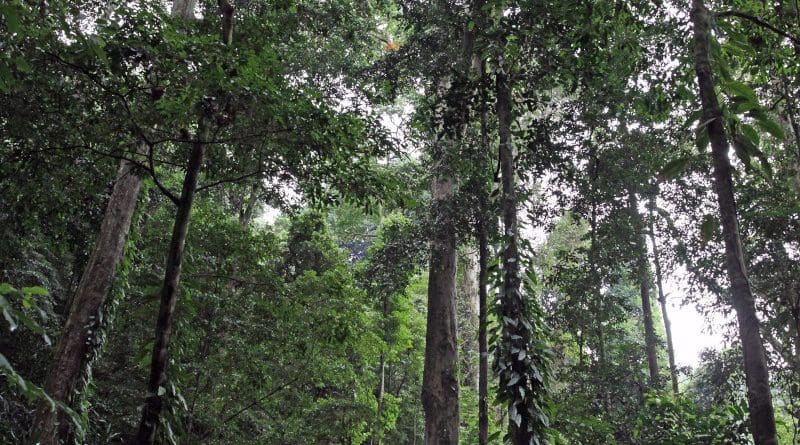Deadwood As A Carbon Store: Insects Accelerate Decomposition On Mount Kilimanjaro
All over the world, climatic influences, insects and other arthropods, as well as microorganisms cause a constant decomposition of deadwood. This natural decomposition releases significant amounts of carbon into the environment and therefore has a major impact on the Earth’s carbon cycle. This has been proven by a new study published in Nature. The speed and causes of deadwood decomposition were investigated at 55 forest sites on six continents. Dr Andreas Hemp and Dr Claudia Hemp from the University of Bayreuth investigated deadwood decomposition in different climatic zones on Mount Kilimanjaro.
The two biologists, who run a research station on Mount Kilimanjaro, studied two forest areas together with Tanzanian partners: a savannah woodlands at the foothills of Mount Kilimanjaro at an altitude of 1,000 metres, where the average annual temperature is 23.9 degrees Celsius, and a mountain forest at an altitude of 1,600 metres. Here it is considerably cooler, the average annual temperature being just 16.5 degrees Celsius. A few years ago, Dr Andreas Hemp actually discovered the tallest trees in Africa growing in a gorge here. As their measurements revealed, about 21 percent of the deadwood in the tree savannah is removed naturally every year. In the somewhat higher-altitude forest, on the other hand, it is only 16 percent.
The difference is due to the fact that the savannah is home to considerably more insects, especially termites, as well as numerous other arthropods. They penetrate the deadwood and live on the nutrients it contains. In the savannah, insects and other arthropods account for nearly 30 percent of deadwood decomposition each year, but their influence is not significant in the montane forest. The scientists determined this difference by piling up deadwood on both study sites and encasing it in cage-like impenetrable nets. Under the nets, natural wood decomposition was driven by climatic influences and microorganisms, but not by insects, millipedes, or other arthropods. The cage-like nets also served to isolate the deadwood from insects at all other forest sites investigated in the global study.
“Our research demonstrates the important role of the interaction of climate and arthropods in deadwood decomposition in the tropics. In another, as yet unpublished study conducted with researchers from the University of Bern, we observed that deadwood stocks at medium altitudes on Mount Kilimanjaro – i.e. between 1,500 and 3,000 metres – are significantly higher than further down in the savannah zone. Here, termites, beetles, and other insects obviously find particularly favourable living conditions. At the same time, larger quantities of deadwood in the savannah zone are also used by humans as fuel. Furthermore, it must be taken into account that most of the rainfall on Mount Kilimanjaro falls above the middle altitudes. Therefore, trees can thrive very well here, which is why the above-ground wood biomass – and thus also the amount of deadwood – reaches its maximum here,” says Dr Andreas Hemp.
He recently collaborated on another study published in Nature, which clearly shows the great importance of Africa’s tropical mountain forests as carbon reservoirs for the planet. The above-ground biomass of these mountain forests makes a significant contribution to climate protection. “Our investigations have shown that in the climatically different regions of Mount Kilimanjaro, up to 37 percent of the above-ground wood biomass consists of deadwood. In this respect, deadwood is also a carbon store that should not be underestimated,” says the Bayreuth biologist.
“The entire mountain region of Mount Kilimanjaro is so fascinating because it is spread over several climatic zones containing very different animal and plant species. Little is known in detail about the interaction of these factors in the formation and decomposition of deadwood – and thus also in the storage and release of carbon. This is where further research should begin. The influences of increasingly intensive land use by humans should also be taken into account,” adds Dr Claudia Hemp.

